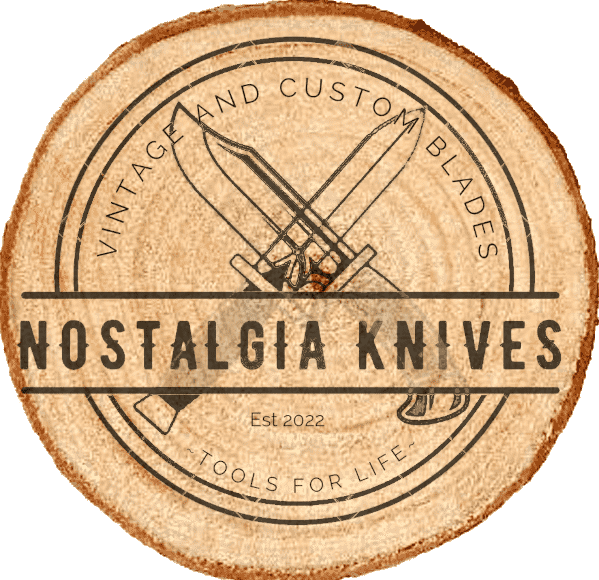The Golden Age of Folding Knives: A Journey through Pocket Knife History.
Posted on November 19, 2023 by congo
The Golden Age of Folding Knives: A Journey through Pocket Knife History.
Introduction:
The folding knife, with its compact design and versatile functionality, has a rich history that spans centuries. This chapter delves into the “Golden Age” of folding knives, a period marked by innovation, craftsmanship, and the widespread adoption of these versatile tools. From traditional pocket knives to iconic designs that have stood the test of time, this journey through history explores the evolution and enduring appeal of folding knives.
Early Innovations and Traditional Pocket Knives
The Slip Joint Mechanism:
The roots of folding knives trace back to ancient times, but the “Golden Age” saw significant advancements in their design and popularity. The slip joint mechanism, characterized by a pivot and a backspring, allowed the blade to fold into the handle without a locking mechanism. Traditional pocket knives featuring this design became commonplace among individuals from all walks of life, serving as indispensable tools for everyday tasks.
Case, Buck, and Other Pioneers:
During the mid-20th century, iconic American knife manufacturers like W.R. Case & Sons and Buck Knives emerged as pioneers in the production of traditional folding knives. Case, in particular, gained renown for its distinctive patterns, quality craftsmanship, and commitment to using high-quality materials. The Trapper, Stockman, and Barlow patterns became synonymous with the era, each with its unique features and design elements.
The Rise of Modern Folding Knives
Locking Mechanisms and Tactical Knives:
As the 20th century progressed, the Golden Age of folding knives witnessed the advent of locking mechanisms that enhanced the safety and functionality of these tools. The lock-back mechanism, popularized by companies like Buck Knives with their Model 110 Folding Hunter, provided a secure way to lock the blade in the open position. Tactical folding knives, designed for military and law enforcement use, further pushed the boundaries of innovation with features like one-handed opening mechanisms and robust locking systems.
Spyderco and the Introduction of the Clip:
In the 1980s, Spyderco, a Colorado-based knife manufacturer, introduced the now-iconic one-handed opening hole and pocket clip. The inclusion of a pocket clip allowed users to conveniently carry their knives in a pocket, providing easy access while minimizing bulk. This innovation revolutionized the way people carried and used folding knives, marking a significant departure from traditional methods.
Collector’s Items and Custom Knives
Limited Editions and Artistry:
The Golden Age of folding knives also witnessed an increase in the appreciation of knives as collectibles. Manufacturers began producing limited-edition runs with unique handle materials, blade finishes, and intricate engravings. Knife collectors sought out these exclusive pieces not only for their functionality but also as works of art that reflected the craftsmanship and creativity of the makers.
Custom Knife Makers:
The era saw the rise of custom knife makers who brought a level of artistry and individuality to folding knives. Renowned craftsmen like Bob Loveless, Tony Bose, and Chris Reeve gained recognition for their handcrafted creations, each imbued with a unique style and attention to detail. These custom knives became sought-after treasures among collectors and enthusiasts alike.
Contemporary Innovations and the EDC Movement
Materials and Design Advances:
In the 21st century, the Golden Age of folding knives continues with ongoing innovations in materials and design. Manufacturers utilize modern materials such as titanium, carbon fiber, and high-performance steels, pushing the boundaries of what is possible in terms of durability and lightweight construction. Advanced manufacturing techniques, including CNC machining, allow for precision and consistency in mass-produced knives.
Everyday Carry (EDC) Culture:
The concept of Everyday Carry (EDC) gained popularity, influencing the design and functionality of folding knives. Knives evolved to meet the needs of individuals who sought compact, versatile tools for daily tasks. The integration of modern features like assisted opening mechanisms, flipper tabs, and ball bearing pivots catered to a new generation of users who valued convenience and functionality in their everyday tools.
Conclusion:
The Golden Age of folding knives has left an indelible mark on the world of cutlery, shaping the way we perceive, use, and collect these versatile tools. From the humble beginnings of traditional pocket knives to the innovative designs of contemporary folding knives, this journey through history showcases the enduring appeal of a tool that has transcended its practical utility to become a symbol of craftsmanship, innovation, and individual expression. As we navigate the landscape of folding knives, we find a rich tapestry of tradition, ingenuity, and a timeless fascination with these pocket-sized companions.
Category: Blade Talk, History & Legacy
Free Shipping on orders over $79.00
- - USA only
- - USPS Flat Rate
- - Not valid with other promotions
Make An Offer!
- - Button only visible to logged in users.
- - Unreasonable offers will be dismissed.
- - Submitting an offer is not a commitment to purchase.
- - Some items excluded from Make Offer feature.
Category Menu
- Under $109292 products
- Camp/Scout Knives3737 products
- Chef Knives33 products
- Collectible Knives335335 products
- True Nostalgia2525 products
- Damascus Knives3434 products
- Everyday Carry[EDC]427427 products
- Fixed-Blade5454 products
- Folding-Blade343343 products
- Straight-Razor11 product
- Pocket Knives397397 products
- Hunting Knives7878 products
- Money Clip Knives22 products
- Multi-Tool Knives4848 products
- Novelty Knives3737 products
- The Barrel33 products
- By Manufacturer390390 products
- Amica11 product
- Anvil Brand66 products
- AutoPoint22 products
- Bear MGC11 product
- Bear & Son Cutlery11 product
- Böker1212 products
- Böker Solingen66 products
- Boker USA33 products
- Boker Plus22 products
- Browning Knives22 products
- Buck knives22 products
- Buck Creek11 product
- CamCo33 products
- Camillus Cutlery3232 products
- Case XX™2626 products
- Cattaraugus Cutlery Co.33 products
- Cherokee11 product
- Clauss Cutlery11 product
- Colonial Knives1818 products
- Coyote Prov. USA11 product
- Ranger11 product
- Columbia River11 product
- Comanche11 product
- Craftsman55 products
- Crowing Rooster11 product
- Cuda11 product
- Custom/Handmade3232 products
- CutCo11 product
- E.C. Simmons Cutlery Co.11 product
- Elk Ridge11 product
- ESEE11 product
- F.A. Bower Imp. Co.11 product
- Federal Knife Co.33 products
- Johnston USA11 product
- Frost Cutlery1515 products
- White Tail11 product
- Steel Warrior55 products
- Frost Family11 product
- G.C. & CO Mora, Sweden11 product
- Gerber44 products
- Gerson Co. Boston11 product
- Hammer Brand55 products
- Hen & Rooster™1010 products
- HIT USA11 product
- Imperial3333 products
- iPak11 product
- IXL George Wostenholm11 product
- J.B Rand & Co.11 product
- John Primble11 product
- Johnson Western Works11 product
- Ka-Bar22 products
- Keen Kutter11 product
- Kent22 products
- Kentucky Cutlery44 products
- Eagle Edge44 products
- Kissing Crane11 product
- Klein Tools Inc.44 products
- Lark33 products
- Latama11 product
- New York Knife Co.11 product
- Old Forge Knives11 product
- Other Knives22 products
- Owl Head22 products
- PAL Cutlery Co.11 product
- Parker Cutlery Co.11 product
- PIC11 product
- Providence Cutlery66 products
- Puma33 products
- Queen Cutlery Co.11 product
- Remington22 products
- Ridge Runner11 product
- RILL Simple Tools11 product
- Rite Edge11 product
- Robeson Cutlery33 products
- Rough Rider33 products
- Royal Brand Cutlery11 product
- Sabre22 products
- Schrade2424 products
- Old Timer1212 products
- Uncle Henry66 products
- Sears55 products
- Seki22 products
- Sharp33 products
- Sheffield Knives55 products
- Simonds11 product
- SOG22 products
- Solingen Knives11 product
- Syracuse USA11 product
- Clover Brand11 product
- The Ideal1717 products
- Thornton USA11 product
- Ulster77 products
- Unknown/Misc.4343 products
- Utica Cutlery Company99 products
- Kutmaster99 products
- Valley Forge - Newark, NJ11 product
- Victorinox1010 products
- Wenger33 products
- Western22 products
- Winchester11 product
- Zippo55 products
EXCELLENT rating
Based on 1 reviews

By using this site you're accepting
our Online Sales Disclaimer
*Must Be 18 years or older to purchase*
Buyers Are Responsible For Knowledge Of And Adherence To Their Country, State and Local Knife Laws.
CA PROP 65 ⚠WARNING: Cancer and Reproductive Harm - www.P65Warnings.ca.gov
Copyright © 2025 · All Rights Reserved · NostalgiaKnives.com
Theme: Natural Lite by Organic Themes
